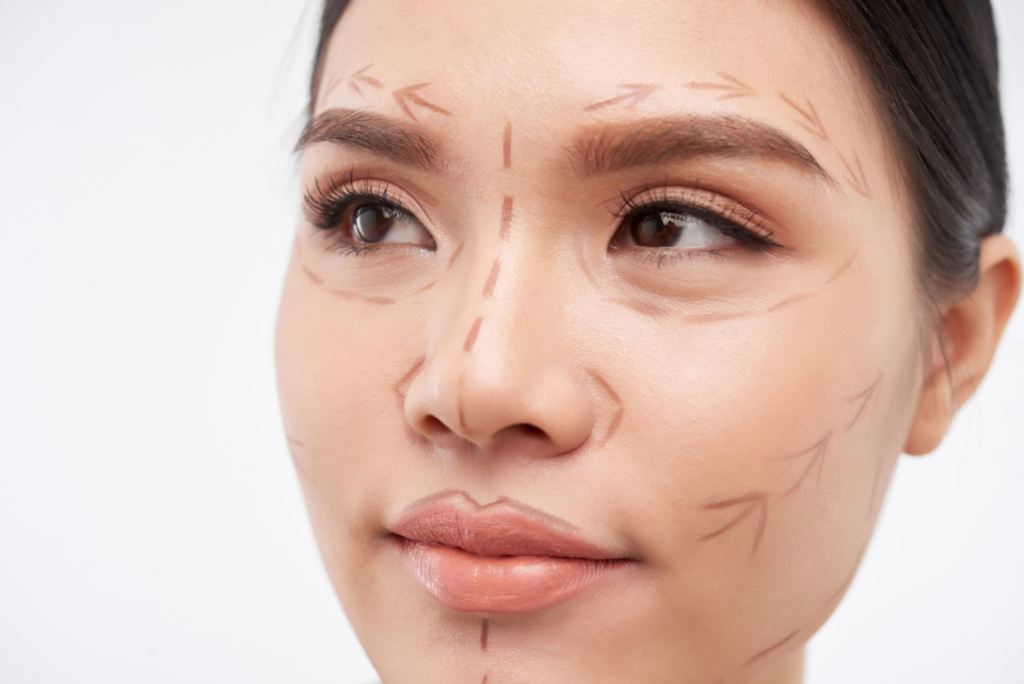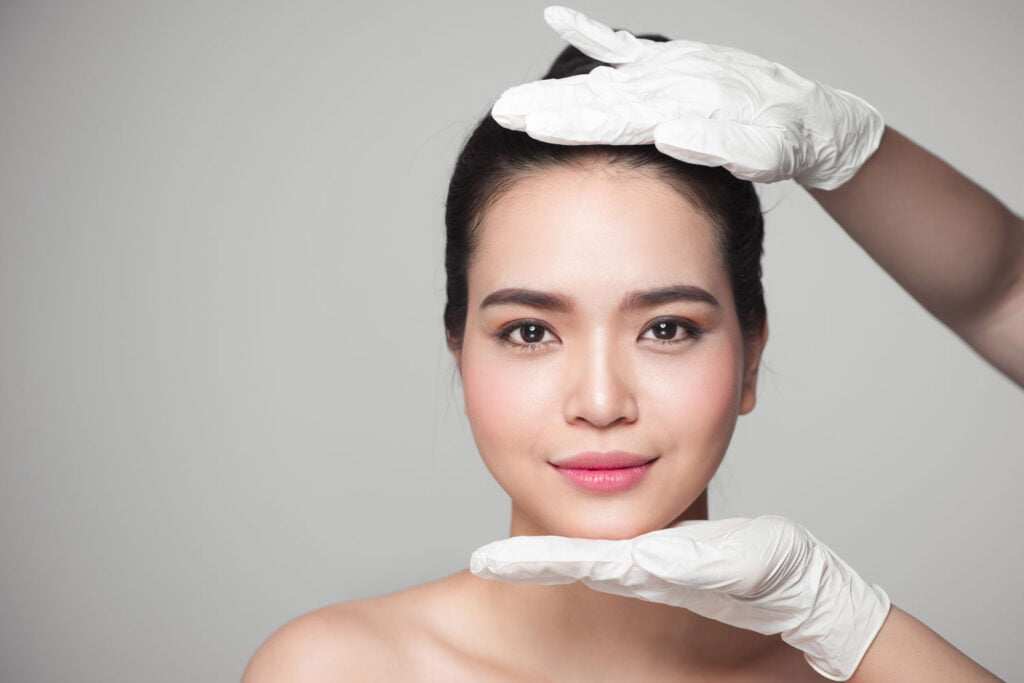For many individuals of Asian descent, the desire for a more feminine facial profile is deeply personal. Asian jaw feminization surgeries offer a path to achieve this, addressing unique skeletal features to create a softer, more harmonious appearance. This comprehensive guide delves into the intricacies of this increasingly popular procedure, exploring its nuances and transformative possibilities.
Table of Contents
Understanding Asian Jaw Feminization
Asian jaw feminization encompasses a range of surgical procedures specifically tailored to reshape the lower face, creating a more delicate and feminine aesthetic. While beauty standards are subjective, certain facial characteristics are widely perceived as feminine, including a tapered jawline, a less prominent chin, and overall facial symmetry.
Asian facial structures often differ significantly from other ethnicities. Common characteristics include a wider, flatter face shape, a stronger jawline with a prominent angle, and a less pronounced chin. These features, while beautiful in their own right, might not align with an individual’s desired feminine aesthetic.
To achieve a softer look, surgeons utilize a combination of procedures, each addressing specific aspects of the jaw and surrounding areas. These may include square jaw reduction techniques, V-line jaw contouring, genioplasty (chin augmentation or reduction), and occasionally, cheek augmentation or buccal fat removal for enhanced facial harmony.

Square Jaw Reduction Techniques for a Slimmer Look
One of the cornerstones of Asian jaw feminization is square jaw reduction. This technique targets the prominent angles of the jaw, creating a slimmer, more oval-shaped facial silhouette. Two primary methods are employed to achieve this: masseter muscle reduction and cortical bone shaving.
Masseter muscle reduction involves injecting botulinum toxin (Botox) into the masseter muscle, a powerful muscle responsible for chewing, located on the sides of the jaw. The injection effectively relaxes and shrinks the muscle over time, leading to a noticeable reduction in jaw width and a softer jawline appearance. This procedure is minimally invasive with minimal downtime, making it an attractive option for those seeking subtle yet effective changes.
For individuals with more prominent bone structure, cortical bone shaving offers a permanent solution. This surgical technique involves carefully shaving down the outer layer of the jawbone (cortex) to reshape the jaw angle and create a smoother, more feminine contour. It is typically performed through an incision made inside the mouth, leaving no visible scars.
Visual representations are often more impactful than words alone. Comparing before and after photos of patients who have undergone square jaw reduction showcases the transformative power of these techniques, revealing a significant decrease in jaw width and a more harmonious balance between facial features.

V-Line Jaw Contouring for a More Delicate Jawline
The coveted V-line jawline, characterized by a gently sloping jaw that tapers towards the chin, embodies a key aspect of feminine beauty in many Asian cultures. Achieving this delicate contour often requires a combination of surgical techniques, with genioplasty and jaw angle osteotomy being the most common.
Genioplasty, also known as chin surgery, plays a crucial role in V-line jaw contouring. By augmenting or reducing the chin, surgeons can establish a more balanced and harmonious proportion between the chin, jawline, and overall face. Chin augmentation typically involves using an implant to add projection and definition to the chin, while chin reduction reshapes the bone to create a more delicate and less prominent appearance.
Jaw angle osteotomy, on the other hand, directly addresses the angle of the jawbone. Through a surgical incision made inside the mouth, the surgeon makes a precise cut in the jawbone, allowing them to reposition and reshape the angle to achieve the desired V-shape. This procedure is particularly effective in addressing overly prominent or square jaw angles.
Achieving natural-looking results is paramount in Asian jaw feminization, ensuring the new jawline harmonizes seamlessly with the individual’s unique facial features. Surgeons specializing in Asian aesthetics possess a deep understanding of facial anatomy and aesthetic preferences, allowing them to create subtle, yet impactful changes that enhance, rather than overpower, natural beauty.
Achieving Facial Harmony Through Jaw Feminization
While jaw feminization focuses on reshaping the lower face, achieving true facial harmony often involves considering other facial features. Procedures like cheek augmentation and forehead reduction can further enhance the overall femininity and balance of the face, working in tandem with jaw contouring to create a more cohesive and aesthetically pleasing result.
Cheek augmentation, using either implants or dermal fillers, can add volume to the midface, creating a softer and more youthful appearance. This can be particularly beneficial for individuals with flat or shallow cheekbones, as it adds dimension and contours to the face, complementing the newly refined jawline.
Forehead reduction, though less common, can address an overly prominent or masculine forehead, creating a smoother and more feminine profile. This procedure involves removing a small portion of bone from the upper forehead, effectively reducing its size and creating a more balanced transition between the forehead, brow bone, and rest of the face.
It is crucial to emphasize that each individual’s facial structure and aesthetic goals are unique. Customized treatment plans are essential to ensure the chosen procedures address specific concerns and create a harmonious balance between all facial features. A thorough consultation with a qualified and experienced surgeon specializing in Asian facial aesthetics is paramount to discuss individual needs, expectations, and desired outcomes.
Conclusion
Asian jaw feminization offers a transformative journey for individuals seeking to align their physical appearance with their inner sense of self. By addressing the unique characteristics of Asian facial structures, these procedures sculpt a softer, more delicate, and harmonious aesthetic. Remember, the pursuit of beauty is deeply personal, and choosing to undergo any surgical procedure is a significant decision. By seeking the expertise of a qualified surgeon, engaging in open communication, and prioritizing natural-looking results, individuals can embark on this transformative path with confidence, embracing a future where their outer beauty reflects their inner radiance.
Visit Dr.MFO Instagram profile to see real patient transformations! Get a glimpse of the incredible results achieved through facial feminization surgery and other procedures. The profile showcases before-and-after photos that highlight Dr. MFO’s expertise and artistic vision in creating natural-looking, beautiful outcomes.
Ready to take the next step in your journey? Schedule a free consultation with Dr. MFO today. During the consultation, you can discuss your goals, ask any questions you may have, and learn more about how Dr. MFO can help you achieve your desired look. Don’t hesitate to take advantage of this free opportunity to explore your options and see if Dr. MFO is the right fit for you.
FAQ
What exactly does “Asian jaw feminization” mean?
Asian jaw feminization refers to a collection of surgical procedures designed to reshape the lower face, specifically tailoring the outcome to create a softer, more delicate appearance often associated with feminine beauty standards. This goes beyond simply reducing jaw size; it involves strategically addressing unique characteristics of Asian bone structure and facial features to achieve a naturally harmonious result.
How does square jaw reduction differ between Botox and bone shaving?
Both techniques achieve a slimmer jawline but target different causes. Botox injections relax and shrink the masseter muscle, responsible for chewing, leading to a gradual reduction in jaw width. This is ideal for those seeking less invasive treatment with minimal downtime. Conversely, bone shaving surgically reshapes the jawbone itself, permanently removing excess bone to create a smoother contour. This is better suited for individuals with significant bone prominence or those seeking a permanent solution.
What makes V-line jaw contouring so popular in Asian facial aesthetics?
The V-shaped jawline, gently tapering towards a delicate chin, holds significant cultural weight in many Asian societies, often symbolizing femininity and beauty. While present in other ethnicities, achieving this look on Asian faces often requires specific contouring due to naturally wider jaw angles and less prominent chins. V-line surgery addresses these features, creating a balanced facial profile sought after by many seeking this aesthetic.
If I’m mainly concerned about my jaw, why would other procedures be considered?
Facial harmony is key to successful feminization. While jaw surgery is the foundation, other features influence overall balance. For example, a delicate jaw paired with flat cheeks might appear disproportionate. Surgeons assess your unique features; cheek augmentation might be suggested to complement the new jawline, resulting in a more naturally feminine appearance rather than one element looking isolated.
How can I be sure I’m getting a natural-looking result, not an overly “done” look?
Open communication with your surgeon is vital. Bring reference photos illustrating your desired outcome, ensuring your definition of “feminine” aligns with theirs. Experienced surgeons specializing in Asian aesthetics understand the nuances of these features, avoiding drastic alterations that look unnatural. Prioritize finding a surgeon who prioritizes subtly enhancing your existing beauty, not erasing it entirely.
Is Asian Jaw Feminization only for women?
While “feminization” implies a gender, the procedures are increasingly sought by anyone desiring a softer facial appearance. Transgender women often benefit, but even cisgender men seeking a less angular, more delicate look are suitable candidates. The goal is achieving the individual’s desired aesthetic, regardless of their gender identity.
What’s the difference between jaw feminization and just getting jaw reduction surgery?
Jaw reduction primarily focuses on size – making a wide jaw narrower. Feminization considers shape and proportion. An Asian jaw might be small already, but the angles are sharp, making it look masculine. Feminization reshapes, softens those angles, even if the size reduction is minor, leading to a more significant aesthetic shift.
I’ve heard of “non-surgical jaw feminization”. Is that a realistic option for Asian features?
Non-surgical options, mainly using fillers, can subtly contour the jawline. However, they’re limited for significant bone structure changes. Asian faces often have prominent angles, which fillers can soften, but not truly reshape. This makes non-surgical more of an enhancement to surgical results or suitable for mild cases only.
How long does it take to recover from Asian Jaw Feminization surgery?
Recovery varies greatly depending on the specific procedures performed. Generally, expect swelling and discomfort for a few weeks. Most activities resume within 2-4 weeks, but strenuous activity may take longer. Final results, with swelling fully subsided, can take several months. Your surgeon provides personalized aftercare instructions.
Are there specific risks or complications more common in Asian jaw feminization compared to other ethnicities?
While all surgeries carry inherent risks, Asian patients may be more prone to keloid scarring or pigmentation changes. Additionally, achieving a natural look requires a surgeon experienced with Asian facial anatomy. Thoroughly researching and choosing a qualified provider greatly minimizes these risks.








